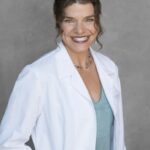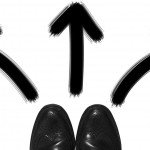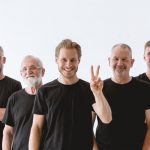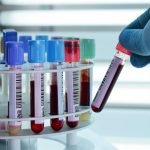The Healing Power of Mindfulness
Jody Stanislaw, ND
As doctors, we’ve been well trained to support the healing of the physical body. We instruct our patients to change their diets to improve digestion, we give cleansing protocols to improve liver function, prescribe herbs to balance hormones, and recommend exercise to improve cardiovascular function…Yet science tells us we are more empty space than actual physical matter. Furthermore, the particles that make up those bits of space can change, based on thoughts or even mere observation.
Treating the physical has its merits; we certainly cannot deny that. However, if our focus ends there, we’re missing a huge opportunity to guide our patients to a much deeper level of healing.
The Power of Listening
Asking deep questions and actively listening are themselves powerful healing modalities. People today are hungry to be heard and to be understood. Making space for communication about our patients’ emotions, as well as their past and likely unresolved emotions, is powerful medicine for healing existing physical ailments. Unresolved emotions can also often be where the root cause of physical ailments reside.
Case in point… last week I had a patient who came in for “minor GI complaints.” As I started taking her history, it was hard to keep her focused. She was very intent on telling me about her romantic struggles. She was dating men she didn’t like, just to have a date, and deeply hungered to find her soulmate. I thought she was coming in for gas and bloating.
As she embarked on telling me her woes, I found myself frustrated by going off on this “tangent” and not addressing her GI concerns. I reminded her that I was not a relationship therapist and apologized that I had nothing to say, yet she continued. The emotions behind her dialogue were so intense, I decided to not interrupt again. I surrendered my agenda and decided to just listen.
By the end of her appointment 30 minutes later, her appearance had changed. She was calmer, more at peace, and had a beaming smile. She gave me a big hug as she said, “I feel so much better! Thank you! I’ll come in another time if my gas and bloating are still bothering me.”
All I had done was listen.
Furthermore, she called me the next day to tell me of her huge breakthrough in clarity regarding what to do about her dating life after talking with me, and how she was feeling better than she had in months.
My unintentional but very effective treatment plan was to surrender my agenda, let her guide the appointment, and to listen.
Learning to “Be With”
Taking this treatment modality of listening a step further, sometimes the best treatment plan is simply nothing, ie, to just learn from and be with whatever symptoms are showing up. This point is well documented in the teachings of Jon Kabat-Zinn, a professor of Medicine Emeritus, a student of the great Buddhist teacher Thich Nhat Hanh, and the creator of the Stress Reduction clinic and the Center for Mindfulness in Medicine at the University of Massachusetts Medical School. According to Kabat-Zinn,
To be in relationship with what you are going through, to hold it, and, in some sense, to befriend it—that is where the healing or transformative power of the practice of mindfulness lies. When we can actually be where we are, not trying to get rid of it or swear it off and find another state of mind, we discover deep internal resources we can make use of. Coming to terms with things as they are is a powerful form of healing.
Appreciating this kind of awareness can have virtually immediate effects on health and well-being. As crazy as it sounds, it is possible to befriend your pain or your fear—rather than feeling that you can’t get anywhere until this thing that bothers you is cut out or walled off or shut down. That is a really profound realization for someone to come to. It’s very healing to realize, if only for a moment here and a moment there, that you can be in a wiser relationship with your interior experience than just being driven by hating it.
(Jon Kabat-Zinn)1
As doctors, we want to get into action and fix things, so this practice of “accepting what is” can feel counterintuitive or even irresponsible. Of course, the line of when to treat versus when to calmly watch and “befriend what is” is unique for every patient and presenting pathology.
Putting This into Practice
How I use this in my practice is this: I design the treatment plan of action, which gives my patient hope for things to improve, but I also talk about the importance of being with what is for now – to do their best at letting go of postponing feeling peaceful until some future date when their symptoms abate, ie, finding peace right now, in the midst of their symptoms.
I often invite my patients to close their eyes, take a few deep breaths to help tap into letting go of tension, and to then bring to mind things they are grateful for in that very moment. Once they do this, even for 1 minute, they usually have a smile on their face. They feel better, calmer. I then remind them that this simple exercise is powerful medicine that they can do anytime… to find peace within the midst of their discomfort.
For those that are ready for deeper work, I then recommend making time at home to have a dialogue with their pain… to get a journal and ask their pain questions, such as, “Why are you here? What do you need? Are you here to teach me something? If so, what?”
This is the process of befriending one’s pain, which may not only be more effective than any supplement we could prescribe, but can be incredibly transformative, mentally and physically.
Dan Siegel, who received his medical degree at Harvard and is a clinical professor of psychiatry at the UCLA School of Medicine and Executive Director of the Mindsight Institute, had this to say:
To help people be with their pain, or with knowledge of their metastasis, or of their mortality, it’s so valuable for them to discover a spaciousness of mind where they realize they’re part of a universal flow of things—people get ill, people do die, and they’re part of that big picture. Within that spaciousness, there is a great clarity that isn’t the same as relaxation. It’s not just hanging loose. You get beyond your internal dialogue of “I want to be better now.” You can be in the midst of great difficulties and yet find immense composure and clarity.
(Dan Siegel)1
So, when you see your next patient, put your pen down for a moment and just listen. Be okay with silence; your patient will likely have something to say and want to be heard. Listening can be the most powerful treatment plan you could offer. Teach your patients to find peace in this very moment, to shift away from any frustration and fear of their condition, even for a moment, and invite them to see their pain as a message that is hungry to be heard and even befriended. Look for emotions held behind their physical pain. Ask open-ended questions and just listen. We humans are complex beings and are more “nothingness” than matter… The best treatment plan often resides in the nothingness.
Dr. Jody Stanislaw, N.D., graduated from Bastyr University in 2007. She works with patients located anywhere around the country over phone/Skype, using natural means to treat today’s most common ailments. Her focus on the mind-body connection, as well as the importance of lifestyle as medicine, is present in every appointment. In her very popular Lifestyle Transformation program, patients receive private weekly calls over a 3-month period, resulting in dramatic improvements in overall health and well-being. Living with type 1 diabetes since the age of 7, she also specializes in treating diabetes. To learn more about working with her to co-manage any of your patients, please send an email to [email protected] or via the ‘contact’ tab on www.DrJodyND.com
Reference:
- The Healing Power of Mindfulness. Hosted by Barry Boyce. Mindful.org Web site. http://www.mindful.org/in-body-and-mind/health-and-healing/the-healing-power-of-mindfulness. Accessed February 15, 2015











